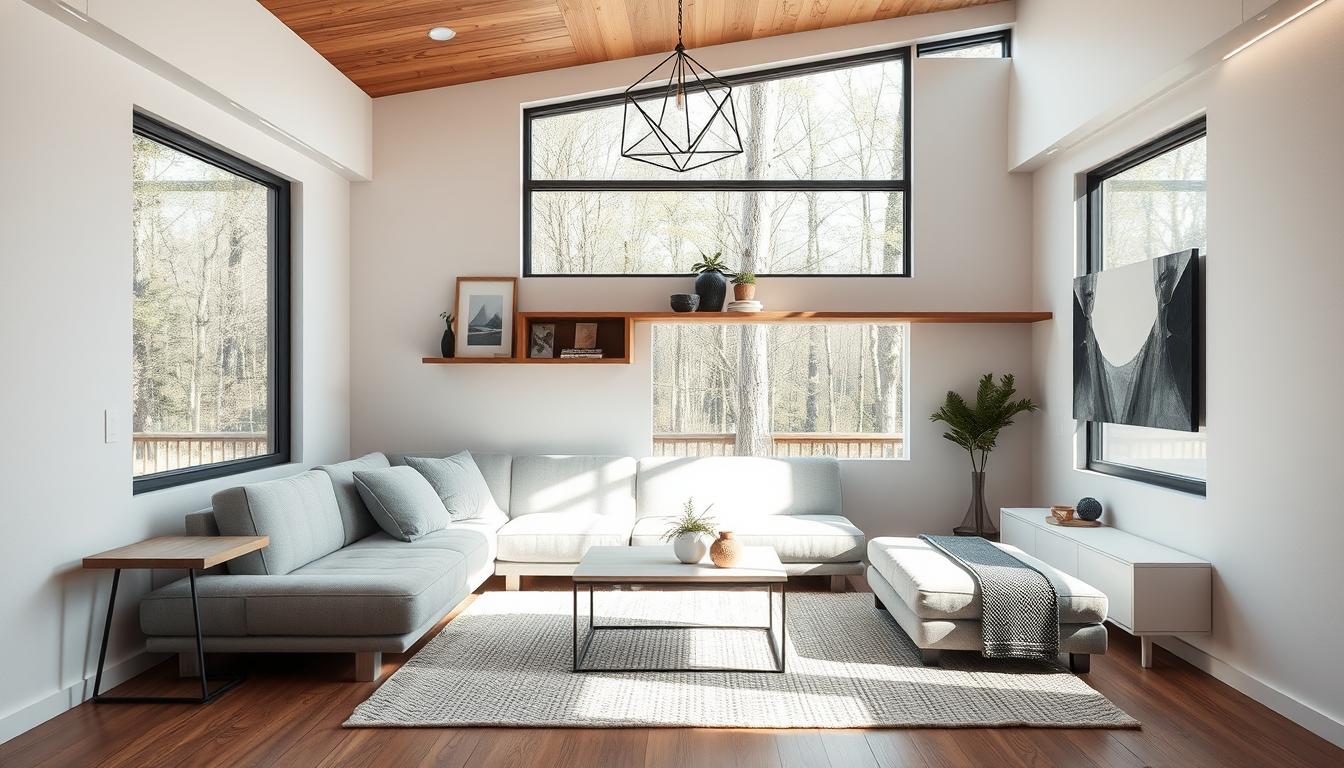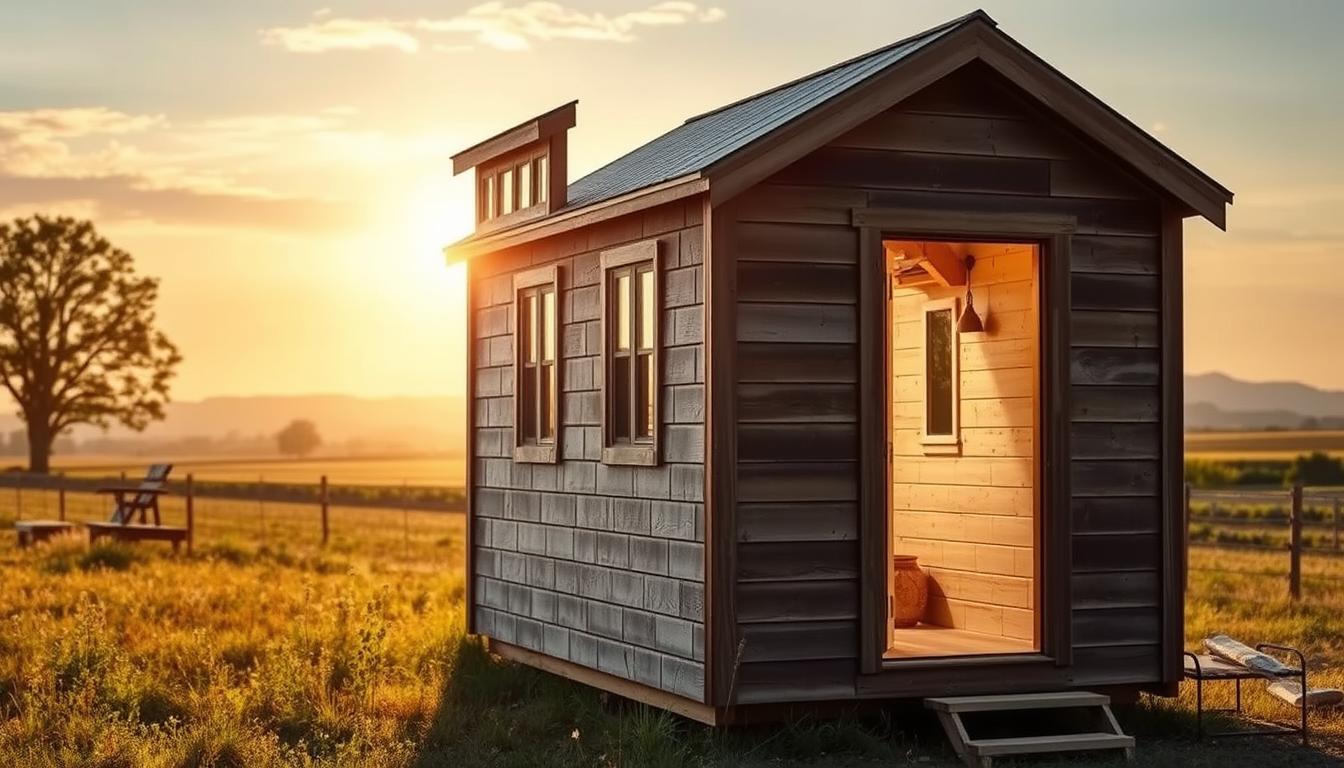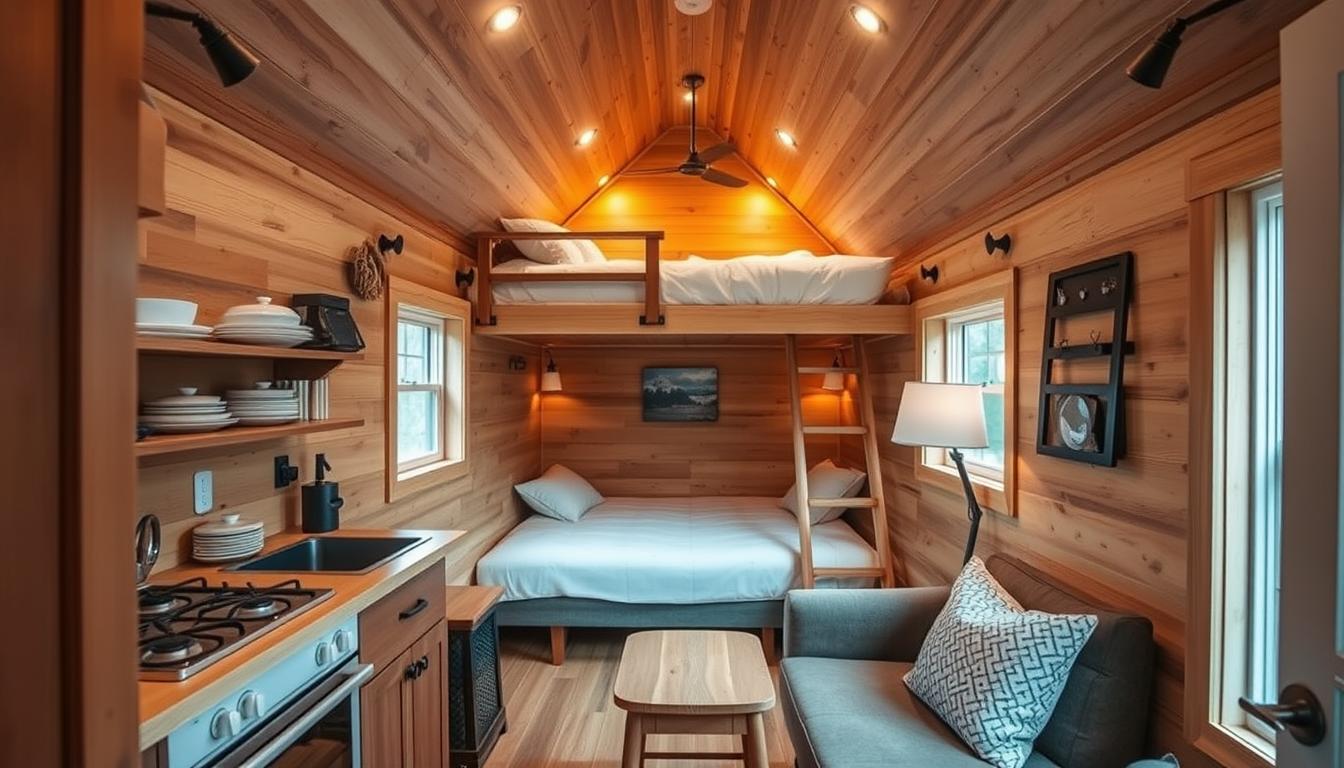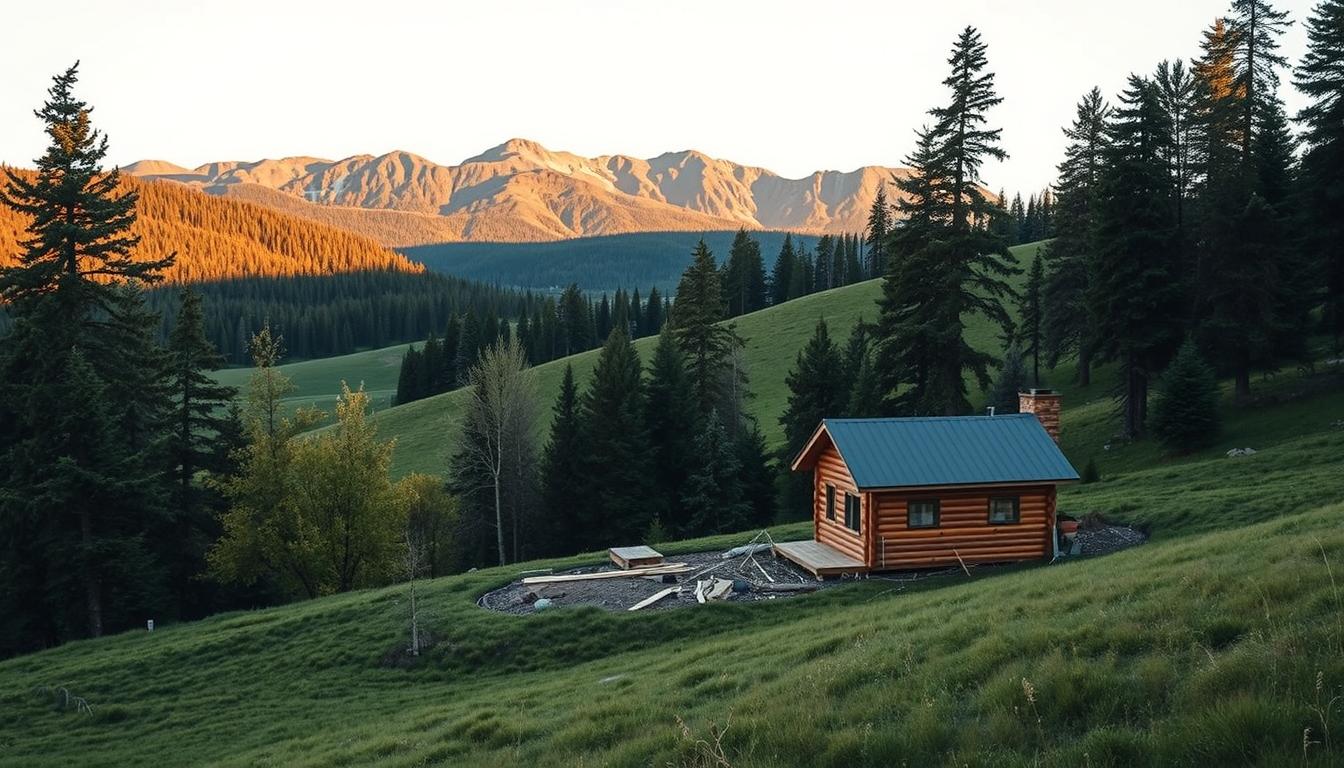Tiny house living has become a popular choice for those seeking a simpler, more sustainable lifestyle. Customizing tiny house plans allows individuals to create a personalized living space that perfectly suits their needs and preferences. In this guide, we will explore the intricacies of tiny house plans, from understanding their characteristics to accessing resources for plan inspiration, and ultimately, managing the budget for a well-executed project.
What You Will Learn about Tiny House Plans
By reading this article, you will learn:
– Definition, characteristics, and benefits of tiny house plans
– Choosing, customizing, and budgeting for tiny house plans
– Structural considerations, DIY vs. professional assistance, popular styles, accessing resources, and managing costs for tiny house plans

Understanding Tiny House Plans
What are Tiny House Plans?
Tiny house plans encompass designs for homes with a floor area of under 400 square feet. These plans prioritize functionality and efficiency, often featuring open floor layouts, creative storage solutions, and multi-purpose furniture to maximize space utilization.

Benefits of Well-Designed Tiny House Plans
Well-designed tiny house plans offer numerous benefits, including lower construction and maintenance costs, reduced environmental impact due to the use of fewer resources, and the flexibility to live more affordably and sustainably.
Choosing the Perfect Tiny House Plan
Factors to Consider When Selecting a Tiny House Plan
Selecting the perfect tiny house plan involves considering lifestyle requirements, desired amenities, and the number of occupants. Evaluating zoning regulations and building codes is crucial to ensure compliance with local laws.
Customization Options to Tailor Plans to Personal Needs
Customizing tiny house plans allows for tailoring the layout and features to align with specific lifestyle preferences and functional needs. From adding extra windows to choosing alternative roofing styles, customization options are extensive.
The Benefits of Customizing Tiny House Plans: A Real-Life Story

Making the Most of Limited Space
When Sarah and her partner decided to downsize to a tiny house, they initially struggled to find a pre-made plan that suited their needs. After exploring their options, they chose to customize a plan to maximize the limited space they had available. By working with an architect to tailor the design to their specific lifestyle and preferences, they were able to create a layout that made the most of every square foot.
The ability to customize the plan allowed them to integrate a workspace that doubled as a dining area, ensuring that their home remained functional without feeling cramped. Additionally, they were able to incorporate unique storage solutions that were essential for their minimalist lifestyle.
Through this process, Sarah and her partner realized the significant benefits of customizing their tiny house plan. Not only did they create a space that perfectly suited their needs, but they also found joy in the design process itself, adding personal touches that made their tiny house feel like home.
Budgeting for Tiny House Plans
Budgeting for tiny house plans involves assessing the costs associated with materials, labor, permits, and utilities. It’s essential to allocate funds for unexpected expenses while also considering long-term operational costs and maintenance requirements.
| Layout Option | Description |
|---|---|
| Lofted Bedrooms | Utilizes vertical space for sleeping areas, freeing up floor space for other functions. |
| Compact Kitchens | Emphasizes efficiency and functionality, often featuring space-saving appliances and clever storage solutions. |
| Space-Efficient Bathrooms | Maximizes the use of available space, incorporating compact fixtures and innovative storage solutions to optimize the bathroom layout. |
Designing the Layout of Tiny Houses
Exploring Different Layout Options for Tiny Houses
Tiny house plans offer diverse layout options, including lofted bedrooms, compact kitchens, and space-efficient bathrooms. Each layout optimizes the available space and promotes a comfortable living environment.
Maximizing Space and Storage in a Small Footprint
Effective space utilization is a hallmark of tiny house design. Innovative storage solutions, such as built-in cabinets, hidden compartments, and convertible furniture, play a pivotal role in maximizing the functionality of compact living spaces.
Integrating Multi-Functional Furniture and Design Elements
Multi-functional furniture, such as convertible sofas and collapsible tables, adds versatility to tiny house interiors. Clever design elements, such as sliding doors and fold-down desks, further enhance the adaptability of the living space.
Structural and Building Considerations for Tiny Houses
Understanding Structural Requirements for Tiny House Construction
Constructing a tiny house necessitates a comprehensive understanding of structural requirements, including foundation options, load-bearing considerations, and the integration of space-saving structural elements.
Emphasizing Sustainability and Energy Efficiency in Tiny House Design
Incorporating sustainable materials, energy-efficient appliances, and passive design strategies, like optimal insulation and natural lighting, aligns with the eco-conscious ethos of tiny house living and contributes to long-term energy savings.
Adhering to Building Codes and Regulations for Tiny Houses
Adhering to local building codes and regulations is imperative for the legality and safety of a tiny house project. Seeking professional guidance to navigate the nuances of zoning laws and construction standards is highly recommended.
DIY Approaches vs. Professional Assistance
Pros and Cons of DIY Design and Building with Tiny House Plans
Embarking on a do-it-yourself (DIY) approach offers creative freedom and potential cost savings. However, it requires substantial time, expertise, and a willingness to learn various construction skills.
Benefits of Working with Professional Architects and Designers for Custom Tiny House Plans
Engaging professional architects and designers ensures access to expert guidance, specialized knowledge, and adherence to industry best practices. Their expertise can streamline the design and construction process, resulting in a well-executed project.

Exploring Popular Tiny House Plan Styles
Overview of Popular Architectural Styles for Tiny Houses
Tiny house plans encompass a diverse range of architectural styles, including modern, minimalist, rustic, and eco-friendly designs. Each style reflects unique aesthetic preferences and functional considerations.
Characteristics and Features of Various Tiny House Plan Styles
Modern tiny house plans often emphasize sleek lines, large windows, and minimalist interior design. Rustic plans may incorporate natural materials and a cozy, cabin-like ambiance, while eco-friendly designs prioritize sustainable materials and energy-efficient systems.
Accessing Tiny House Plans and Resources
Reputable Sources for Obtaining Tiny House Plans
Reputable sources for obtaining tiny house plans include licensed architects, experienced designers, and certified tiny house plan providers. These sources offer professionally curated plans with a focus on quality and functionality.
Online Platforms, Books, and Additional Resources for Tiny House Plan Inspiration
Online platforms and books provide a wealth of inspiration and information for customizing tiny house plans. From virtual plan repositories to design-focused publications, these resources cater to diverse design preferences and budgetary considerations.
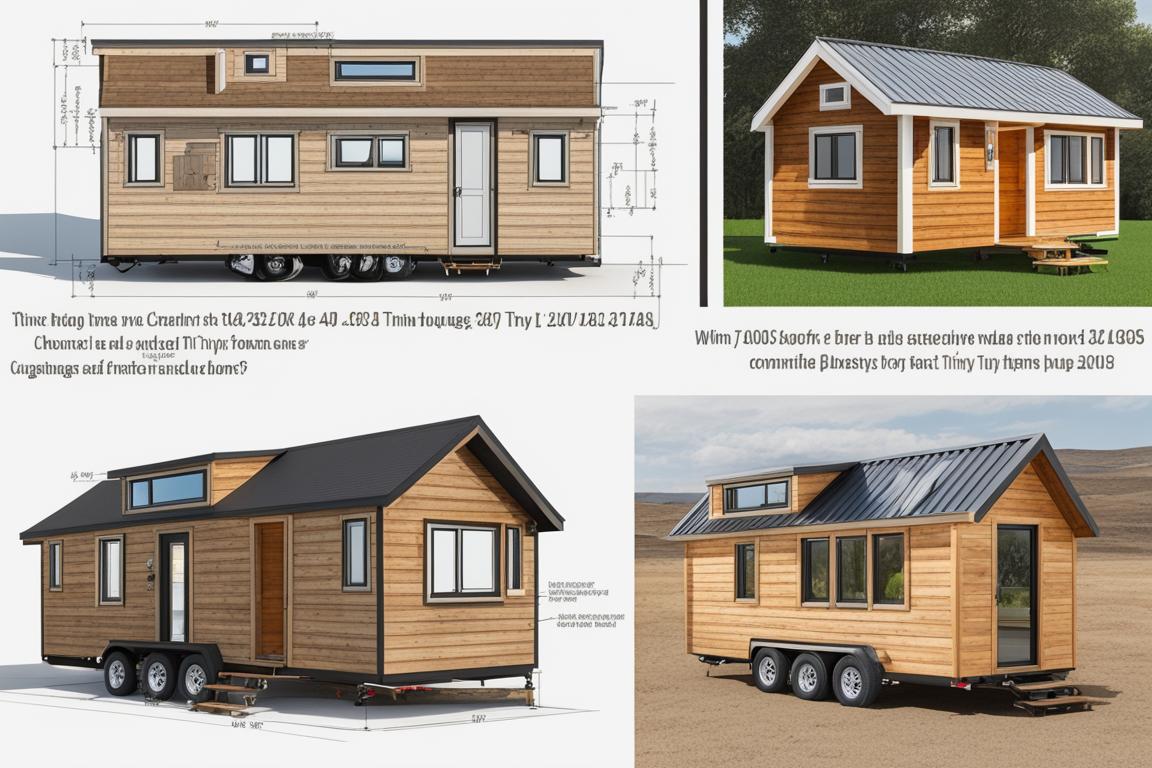
Tips and Techniques for Customizing Tiny House Plans
Modifying Existing Plans to Suit Specific Needs and Preferences
Modifying existing plans involves tailoring the layout, interior features, and exterior elements to align with specific lifestyle requirements. Whether it’s expanding the kitchen space or adding a dedicated workspace, customization enhances the livability of the tiny home.
Adding Personal Touches and Design Ideas to Customized Tiny House Plans
Incorporating personal touches, such as unique decor elements, custom storage solutions, and personalized color schemes, infuses the tiny house with individual character and reflects the homeowner’s distinct style.
Managing Budget and Costs for Tiny House Plans
Estimating Building Costs Based on the Chosen Tiny House Plan
Estimating building costs involves analyzing material expenses, labor fees, permit costs, and utility connections. Detailed cost estimates enable effective budget planning and financial preparedness.
Strategies for Optimizing the Budget Without Sacrificing Quality
Optimizing the budget involves exploring cost-effective materials, repurposing salvaged components, and considering DIY construction where feasible. Prioritizing essential features while being mindful of cost implications fosters a balanced approach to budget management.
Conclusion: The Significance of Thoughtful Tiny House Plans
Final Considerations When Selecting a Tiny House Plan
When selecting a tiny house plan, it’s crucial to prioritize functionality, sustainability, and compliance with local regulations. Thoughtful consideration of these factors lays the foundation for a successful and harmonious living experience.
Customizing tiny house plans offers a unique opportunity to create a tailored living space that reflects individual preferences and lifestyle needs. Whether opting for a DIY approach or seeking professional assistance, the ability to customize tiny house plans empowers individuals to design and build a home that resonates with their vision of sustainable, efficient, and personalized living. By understanding the intricacies of tiny house plans and leveraging the available resources and customization options, individuals can embark on a rewarding journey towards creating their ideal tiny home.
FAQ
Question: Who creates tiny house plans?
Answer: Architects and designers create tiny house plans.
Question: What should tiny house plans include?
Answer: Tiny house plans should include detailed floor plans and construction blueprints.
Question: How can I customize my tiny house plans?
Answer: You can customize tiny house plans by working with a designer to modify the layout and features.
Question: Isn’t it expensive to build a tiny house?
Answer: While initial costs can be high, tiny houses often save money in the long run with lower maintenance and utility expenses.
Question: Where can I find affordable tiny house plans?
Answer: You can find affordable tiny house plans online, through specialized websites and marketplaces.
Question: Can I build a tiny house without plans?
Answer: It’s not recommended to build a tiny house without plans, as they ensure structural integrity and compliance with building codes.
With over a decade of experience in sustainable architecture and design, Daniel Foster is a leading expert in the field of tiny house construction. They hold a Master’s degree in Architecture from the renowned University of California, Berkeley, and have been involved in numerous successful projects focusing on eco-friendly and space-efficient housing solutions.
Daniel Foster has also conducted extensive research on the benefits of well-designed tiny house plans, emphasizing the importance of integrating sustainability and energy efficiency into the design process. Their work has been published in leading architectural journals, including the Journal of Sustainable Architecture and the International Journal of Green Design.
As a passionate advocate for affordable and customizable housing options, Daniel Foster has dedicated their career to helping individuals and families achieve their dream of living in a thoughtfully designed tiny home. Through their expertise and practical insights, they continue to inspire and empower others to embrace the tiny house lifestyle while maximizing comfort, functionality, and style.






